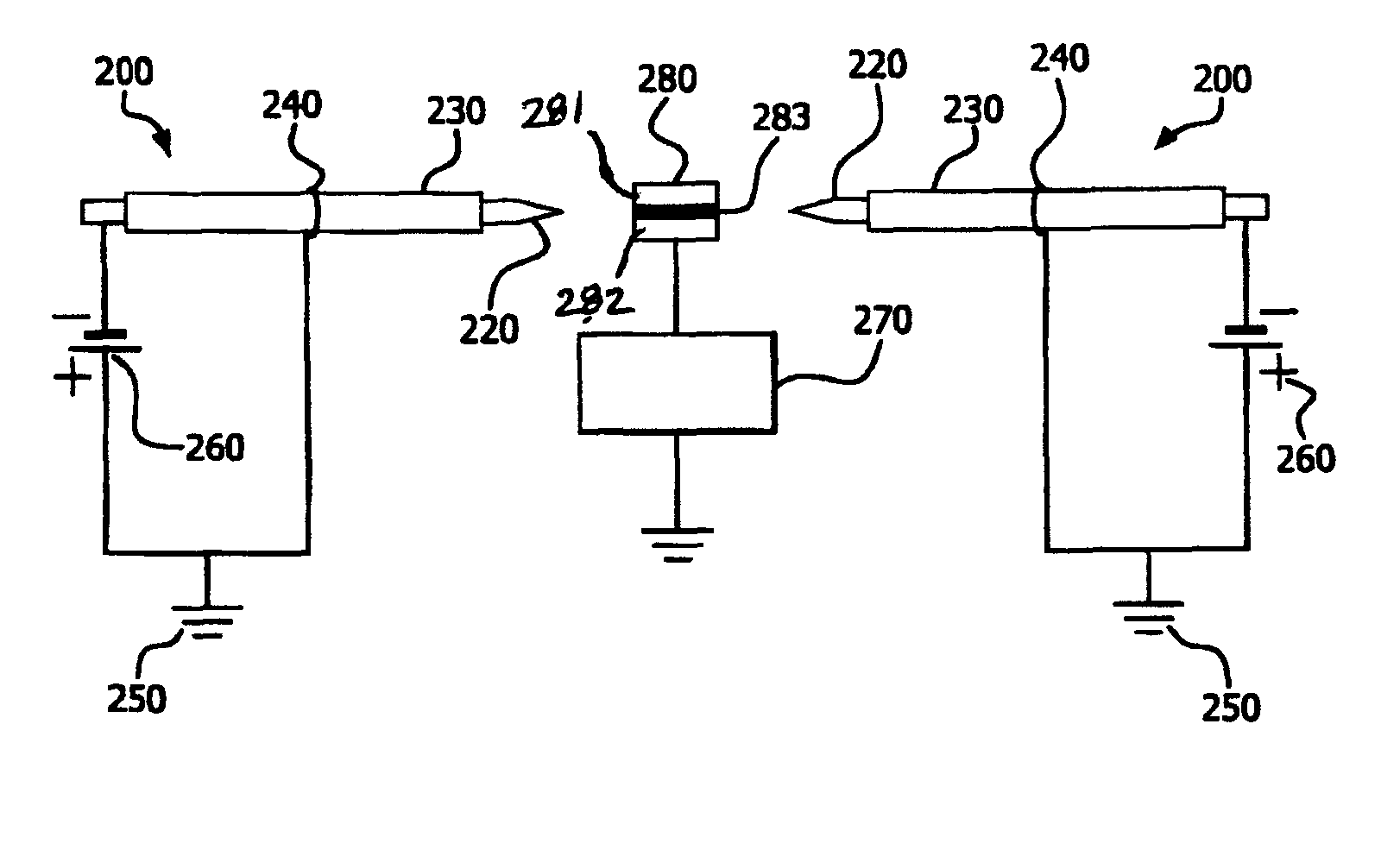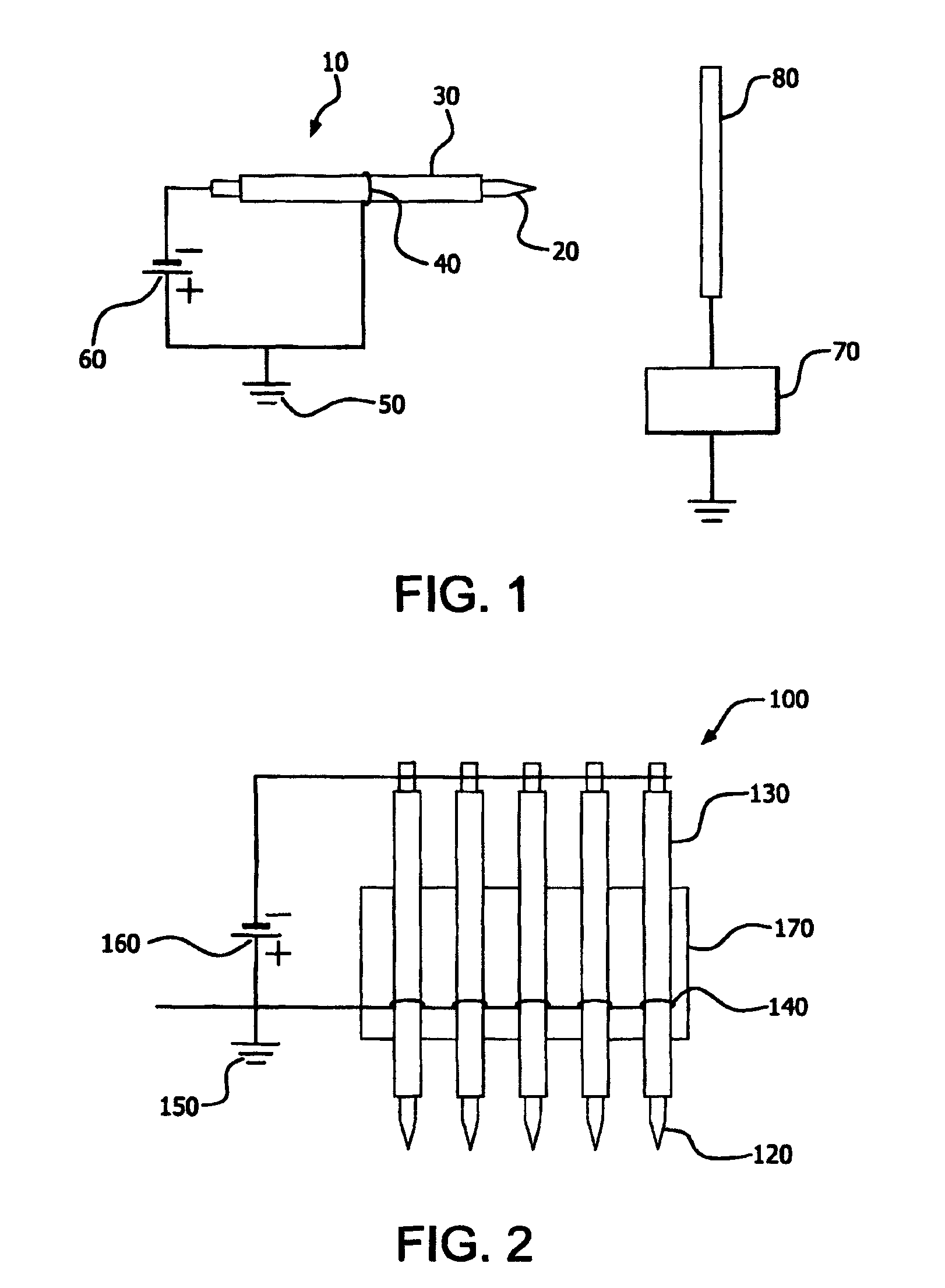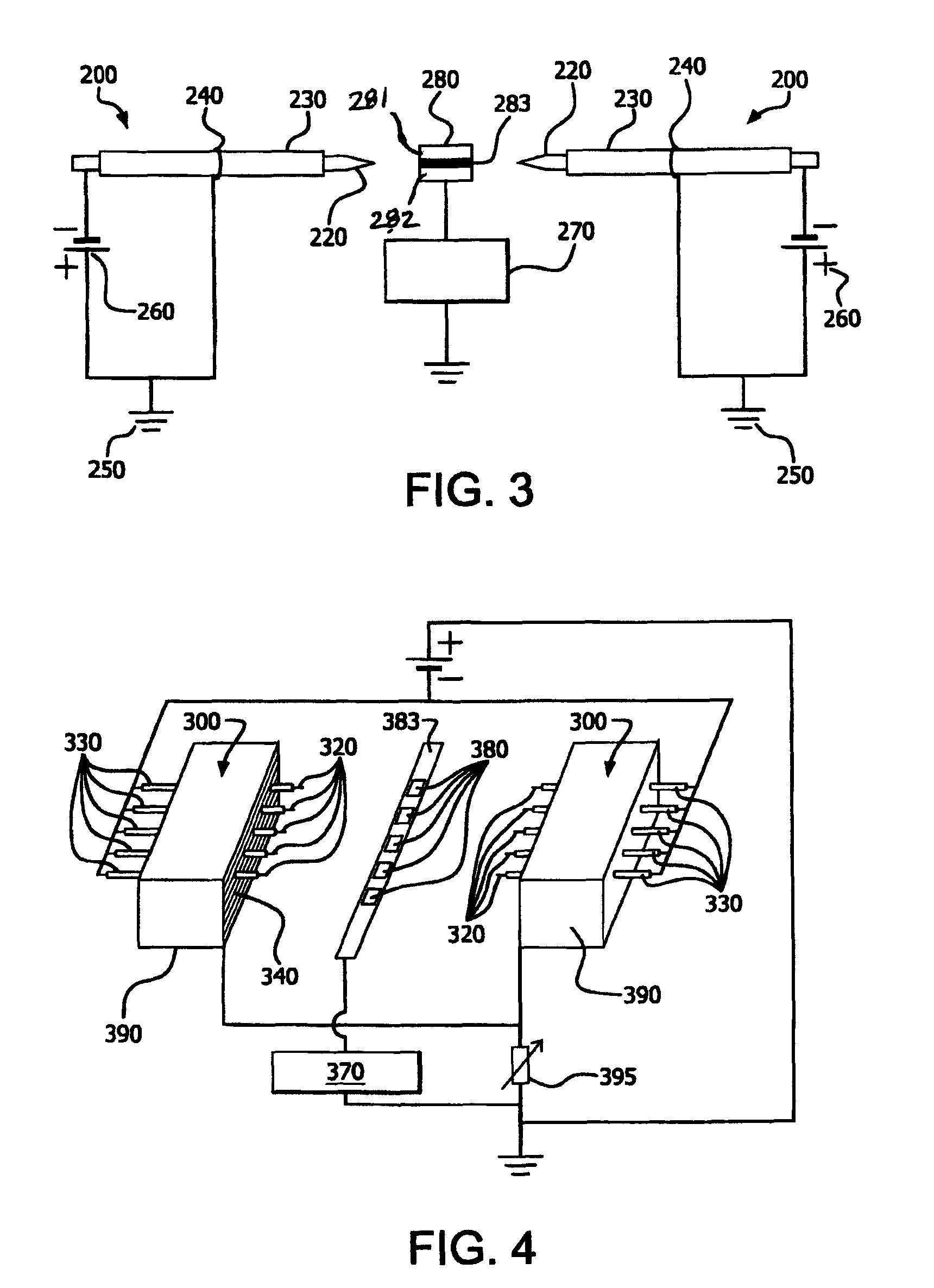Apparatus and method for removal of surface oxides via fluxless technique involving electron attachment
a fluxless and electron attachment technology, applied in the direction of chemistry apparatus and processes, solventing apparatus, manufacturing tools, etc., can solve the problems of forming voids in the solder joints, contaminating the reflow furnace, corrosion and electric shorts, etc., and achieve the effect of reducing the threshold voltage of edge emission
- Summary
- Abstract
- Description
- Claims
- Application Information
AI Technical Summary
Benefits of technology
Problems solved by technology
Method used
Image
Examples
example 1
[0071]A field emission apparatus, such as that shown in FIG. 2 and containing five stainless steel cathode needles each tightly inserted into a dielectric material which comprised an alumina ceramic tube (0.46 mm inner diameter (I.D.) and 1.2 mm outer diameter (O.D.)) which was then mounted on a ceramic plate, was used in the present example. The distance between the cathode needles was 5 mm. The sharp tip of each cathode needle protruded about 1.0 mm out of the corresponding alumina ceramic tube. An anode metal wire was wound on each of the five tubes and electrically grounded. The wound anode wire was 10 mm away from the end of the tube toward the sharp tip side of the cathode needle. Such prepared structure was located in a quartz tube furnace purged with 4 vol % H2 in N2 at room temperature. When a pulsed (10 KV) negative voltage potential applied on the five needles was increased to −3.7 KV, all the five needle tips started to emit electrons. When electron emission starts on a ...
example 2
[0072]A field emission apparatus structure, which contains two stainless steel cathode needles each inserted with a ceramic (alumina) tube or dielectric material and mounted on both sides of a die attachment sample placed on a copper plate such as the configuration shown in FIG. 3 was tested. The die attachment sample was electrically conductive and grounded. The distance between each needle tip and the sample edge was 5.5 mm. The sharp tip of each cathode needle extended 1.0 mm out of the corresponding dielectric tube. An anode metal wire was wound upon each of the two dielectric materials or tubes and electrically grounded. The wound anode wire was 10 mm away from the end of the tube toward the sharp tip side. Such prepared structure was located in a quartz tube furnace purged with 4 vol % H2 in N2 at room temperature. When a pulsed (10 KV) negative voltage potential applied on the two needles was increased to −1.9 KV, the two needle tips lit up in a blue color, indicating electro...
example 3
[0073]The same field emission apparatus structure and the sample arrangement described in Example 2 and FIG. 3 was tested again in a quartz tube furnace purged with 15 vol % H2 in N2. The die attachment sample contained a fluxless gold / tin solder preform (m.p. 280° C.) sandwiched by a gold / nickel coated ceramic and a gold / nickel coated copper, which were used to simulate die attachment device. The three pieces of the die attachment sample each had the same size: 3 mm×6 mm. To demonstrate the feasibility of electron attachment (EA) activated H2 in N2 for fluxless die attachment, a pulsed (10 KV) negative voltage potential was applied on the two needles at room temperature. When the applied voltage was increased to −1.8 KV, the two needle tips lit up in a blue color, indicating electron emission. The current received on the sample was −0.45 mA. The sample was then heated up to 290° C. in a ramp time of two minutes and soaked at 290° C. for one minute before cooling down. The electron ...
PUM
| Property | Measurement | Unit |
|---|---|---|
| work function | aaaaa | aaaaa |
| electrical potential | aaaaa | aaaaa |
| melting point | aaaaa | aaaaa |
Abstract
Description
Claims
Application Information
 Login to View More
Login to View More - R&D
- Intellectual Property
- Life Sciences
- Materials
- Tech Scout
- Unparalleled Data Quality
- Higher Quality Content
- 60% Fewer Hallucinations
Browse by: Latest US Patents, China's latest patents, Technical Efficacy Thesaurus, Application Domain, Technology Topic, Popular Technical Reports.
© 2025 PatSnap. All rights reserved.Legal|Privacy policy|Modern Slavery Act Transparency Statement|Sitemap|About US| Contact US: help@patsnap.com



